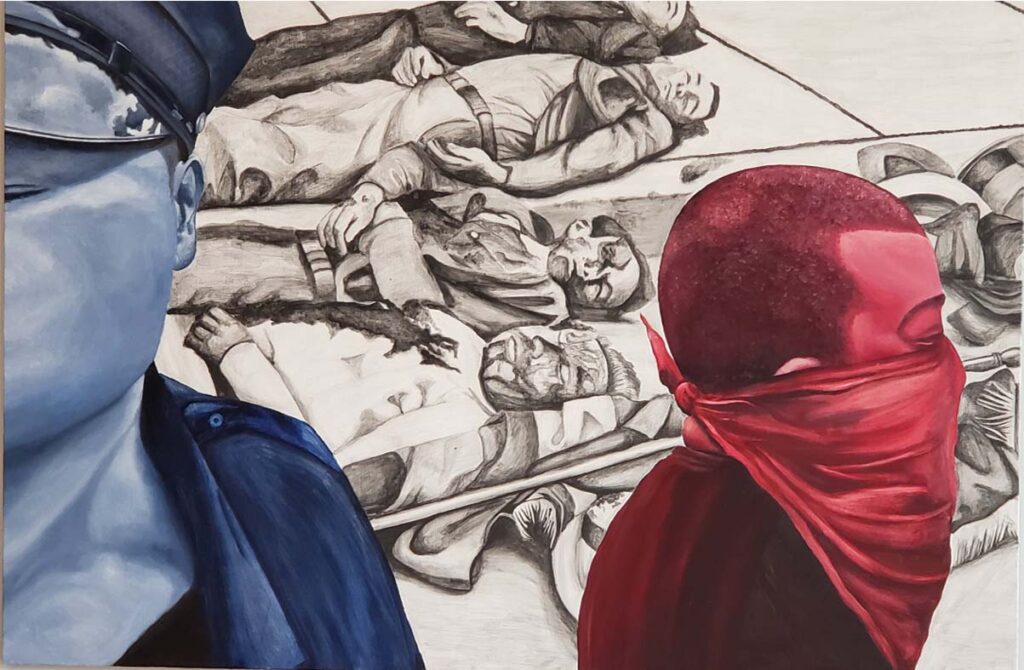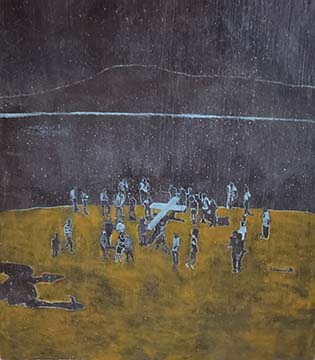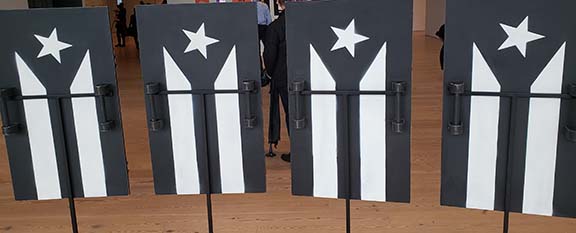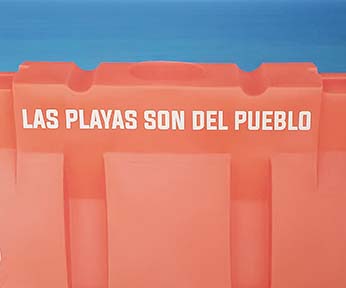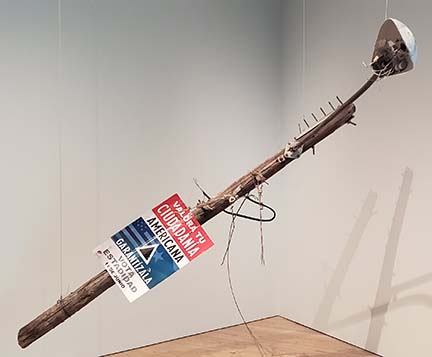By Lucy Komisar
There is sometimes a surreal disconnect between what the political class and the artistic class say. The Whitney Museum’s Puerto Rico exhibit, on till April 23, is an attack on American colonialism. The U.S. annexed the island as booty after victory in the Spanish-American War of 1898, and these artists’ works say it oppresses the people who live there.
Major Puerto Rican artists have joined in the exhibit, “Puerto Rican Art in the Wake of Hurricane Maria” (2017) that puts that devastation in the context of what they show the occupiers have wrought. The works were created between 2017 and 2022 by twenty artists from the island and its diaspora.
To make their views clear, one wall panel says, “Puerto Rico remains an ‘unincorporated territory of the United States – a euphemism for a colony.” Another, “Resistance and Protest,” recalls the summer of 2019 when protestors brought down the corrupt governor, Ricard Rosselló.
“Google the Ponce Massacre” (2021) by Danielle De Jesus (Brooklyn), recalls the 1937 police massacre of 19 people in a peaceful protest. The figures in blue and red are from a photo the artist took in Union Square (Manhattan) in 2019 during protests calling for the resignation of Rosselló. The title plaque says it represents the perpetual violence of the state against those seeking change.
“Procession in Vieques III/Procesión en Vieques III (2022) by Armig Santos (Caguas) is a tribute to David Sanes Rodríguez, an employee at the U.S. Naval facility on the island of Vieques, who was killed in 1999 when two practice bombs were dropped near his observation post. The protests led to the expulsion of the Navy from that island in 2001.
Miguel Luciana (San Juan) created “Shields/Escudos” (2020), a black and white version of the Puerto Rican flag, from scrap metal and wood. The metal is from decommissioned school buses, the result of closing hundreds of schools as a “cost-saving” austerity device by the Secretary of Education, Julia Keleher, who was later convicted of corruption. The “shields” are to defend the youth who suffer the failures of the system. This black and white flag has become is a symbol of anticolonial protest.
Garvin Sierra Vega (Ponce) created “Las Plays Son del Pueblo/ The Beaches Belong to the People” as one of 37 printed works from digital posters put on Instagram 2019-2022. The theme is the incompetence and neglect of the local and federal governments. The law gives Puerto Ricans public access to beaches, but increasingly hotels and apartment buildings have blocked access, creating private beaches and resorts for the rich. There’s a citizens’ movement to fight that; therefore, this rallying cry, “The beaches belong to the people.”
See this about the movement to take back the beaches.
Valora tu mentira americana/Value your American lie (2018) by Gabriella Torres-Ferrer (Arecibo) is an ironic installation on a wooden lamppost found among debris after the hurricane. It holds a sign urging people to vote for statehood in a June 2017 non-binding plebiscite for statehood, independence or continuing as a U.S. territory.
Only 23% voted since even the votes of the 97% who chose statehood were irrelevant. The sign on the post says, “Value your American citizenship, vote statehood.”
Three months later, the hurricane struck, and the artist tells what she thinks of the U.S. commitment to Puerto Ricans’ well-being: “Value your American lie.”
“No existe un mundo poshuracán: Puerto Rican Art in the Wake of Hurricane Maria.” Whitney Museum of American Art, 99 Gansevoort St., Meatpacking District, New York City. Nov 23, 2022–Apr 23, 2023, Free admission April 22, 10:30 to 6. Pay-what-you-wish Fridays 7 to 10pm. Museum website for hours, tickets and special events.


